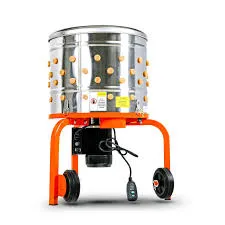Efficient Solutions for Home and Commercial Vacuum Food Packaging Machines
Dec . 29, 2024 12:33 Back to list
Efficient Solutions for Home and Commercial Vacuum Food Packaging Machines
The Evolution and Importance of Vacuum Food Packaging Machines
In recent years, the food industry has been rapidly evolving, with technology playing a pivotal role in enhancing food preservation and safety. Among the most significant advancements is the vacuum food packaging machine, a tool that has revolutionized how food is stored, transported, and consumed. This article explores the workings, benefits, and future of vacuum food packaging machines, underscoring their importance in today's food industry.
Vacuum food packaging machines operate on a simple yet effective principle they remove the air from a package before sealing it. This process significantly reduces the amount of oxygen in the packaging, thereby inhibiting the growth of aerobic bacteria and fungi, which are responsible for food spoilage. By creating a vacuum-sealed environment, these machines extend the shelf life of food products, making them a crucial solution for both home and commercial use.
One of the primary benefits of using a vacuum packaging machine is the preservation of freshness. When food is vacuum sealed, its natural moisture is retained, preventing it from drying out. Whether it's meats, vegetables, or leftovers, vacuum sealing helps maintain the quality and flavor of food for extended periods. For instance, vacuum-packaged meats can last up to 3-5 times longer in a freezer than food stored in traditional containers or bags. This capability not only reduces food waste but also allows consumers to enjoy seasonal produce at any time of the year.
In addition to enhancing preservation, vacuum packaging is also an excellent way to improve storage efficiency. By removing excess air, vacuum-sealed bags can be stored easily in refrigerators or freezers, maximizing available space. This is especially beneficial for restaurants and food processors, where space is often at a premium. The compact nature of vacuum-sealed packages enables better inventory management and helps maintain a clean and organized kitchen or storage area.
vacuum food packaging machine

Vacuum packaging machines also play a crucial role in food safety. The risk of spoilage and foodborne illnesses is significantly reduced when food is properly vacuum-sealed. With the rise of food recalls and safety concerns, consumers are increasingly cautious about the products they purchase. By utilizing vacuum packaging, manufacturers can assure customers that their products are safeguarded against contamination while maintaining freshness. This assurance is not just a business strategy; it builds trust between consumers and food producers.
In a commercial setting, vacuum packaging machines have become indispensable for food processors and retailers. They are used to package a wide variety of products, from perishable items like dairy and meats to dry goods such as pasta and grains. The machines vary in size and capabilities, with some designed for high-volume packaging and others intended for smaller operations. Businesses can choose from chamber vacuum sealers, external vacuum sealers, and industrial vacuum packers, depending on their specific needs.
As the demand for vacuum packaging continues to grow, manufacturers are also innovating and adapting their machines to meet contemporary challenges. For instance, some machines now feature advanced technology, such as automatic sealing and marinating capabilities, which streamline the food preparation process. Furthermore, with increasing environmental concerns, there is a trend toward using biodegradable and recyclable vacuum-sealing materials, aligning with global sustainability efforts.
Looking to the future, vacuum food packaging machines are poised to become even more essential. As the global population increases and food production faces pressure from climate change and resource scarcity, efficient food preservation methods will be crucial. Innovations in food science and technology will likely lead to even more sophisticated vacuum packaging systems that enhance food quality and safety.
In conclusion, vacuum food packaging machines represent a significant advancement in food preservation technology. By extending the shelf life of food products, improving safety, and maximizing storage efficiency, they offer invaluable benefits to both consumers and producers. As the food industry continues to evolve, these machines will remain at the forefront, ensuring that food is not only preserved effectively but also enjoyed safely. Embracing this technology is not just an option for those involved in the food industry; it is a necessity for a sustainable and efficient future in food production and consumption.
-
Hot Sale 24 & 18 Door Rabbit Cages - Premium Breeding Solutions
NewsJul.25,2025
-
Automatic Feeding Line System Pan Feeder Nipple Drinker - Anping County Yize Metal Products Co., Ltd.
NewsJul.21,2025
-
Automatic Feeding Line System Pan Feeder Nipple Drinker - Anping County Yize Metal Products Co., Ltd.
NewsJul.21,2025
-
Automatic Feeding Line System - Anping Yize | Precision & Nipple
NewsJul.21,2025
-
Automatic Feeding Line System - Anping Yize | Precision & Nipple
NewsJul.21,2025
-
Automatic Feeding Line System-Anping County Yize Metal Products Co., Ltd.|Efficient Feed Distribution&Customized Animal Farming Solutions
NewsJul.21,2025






